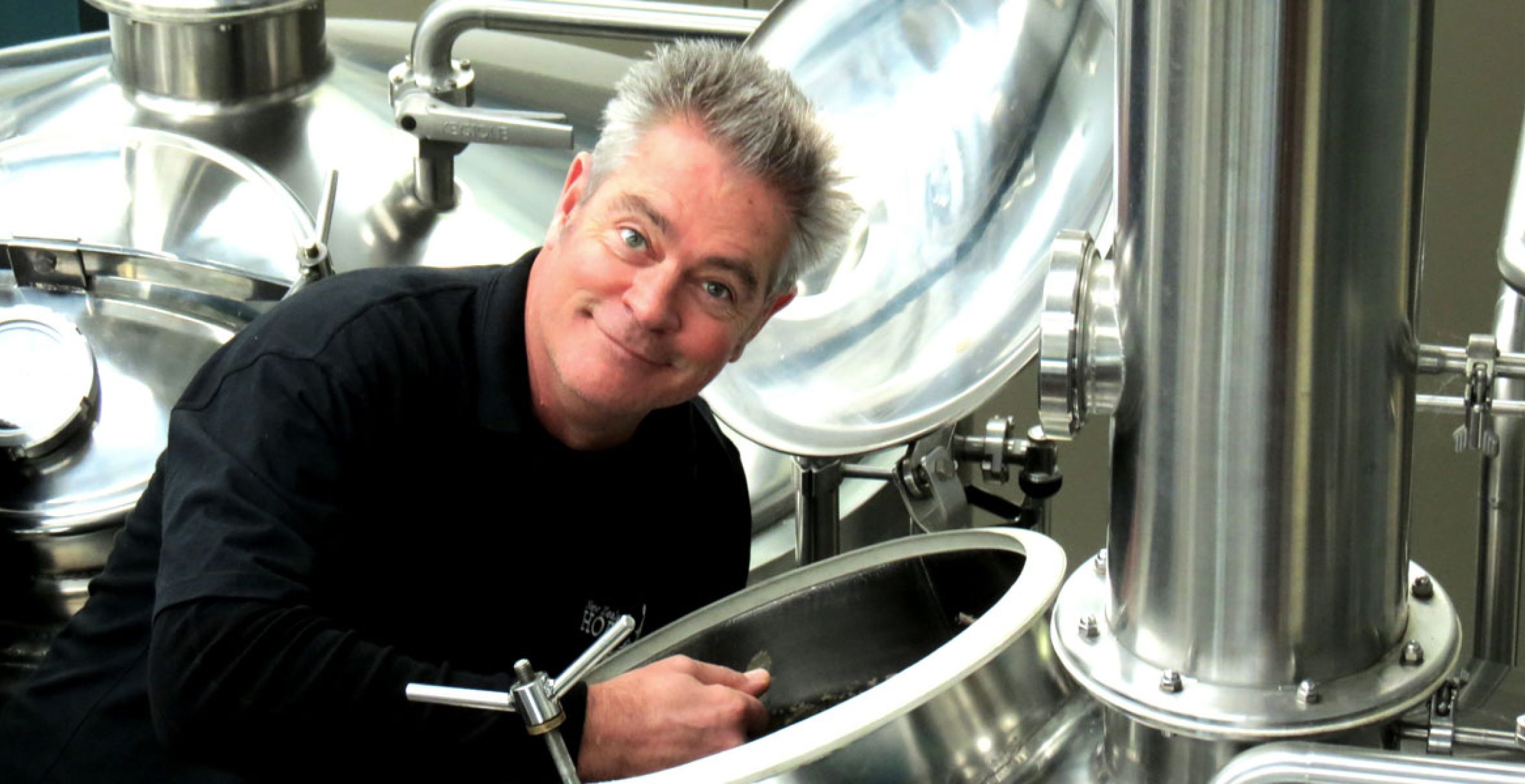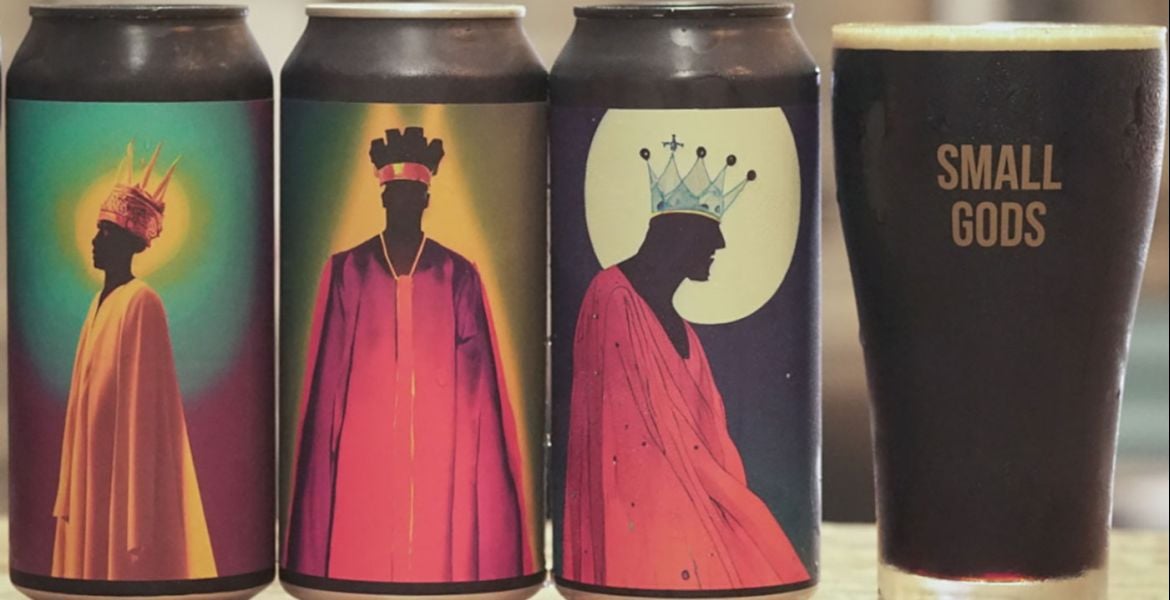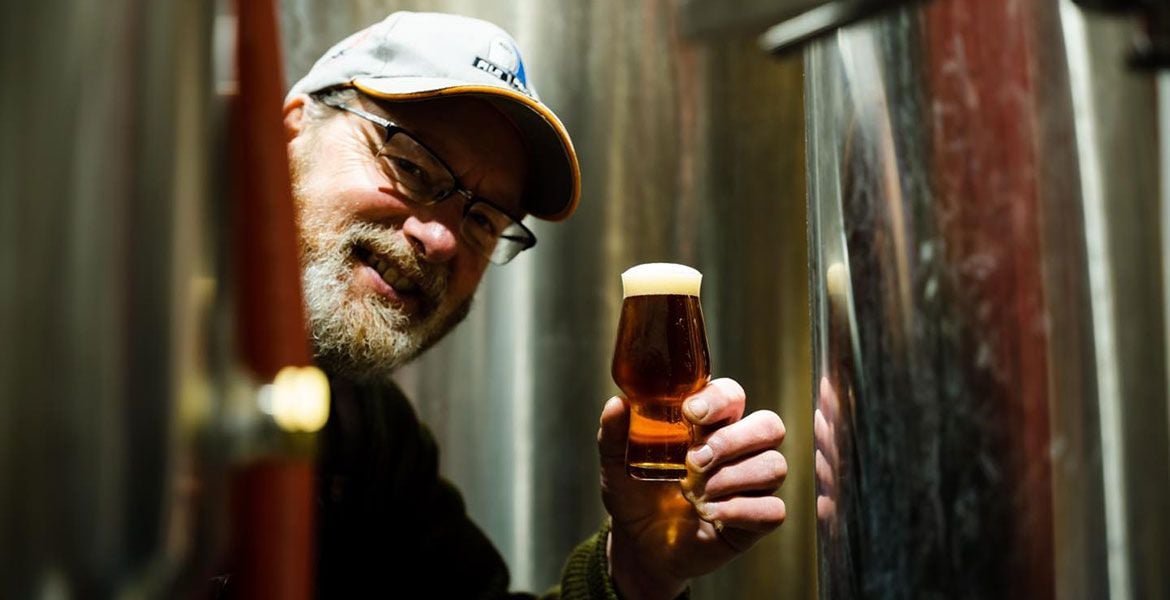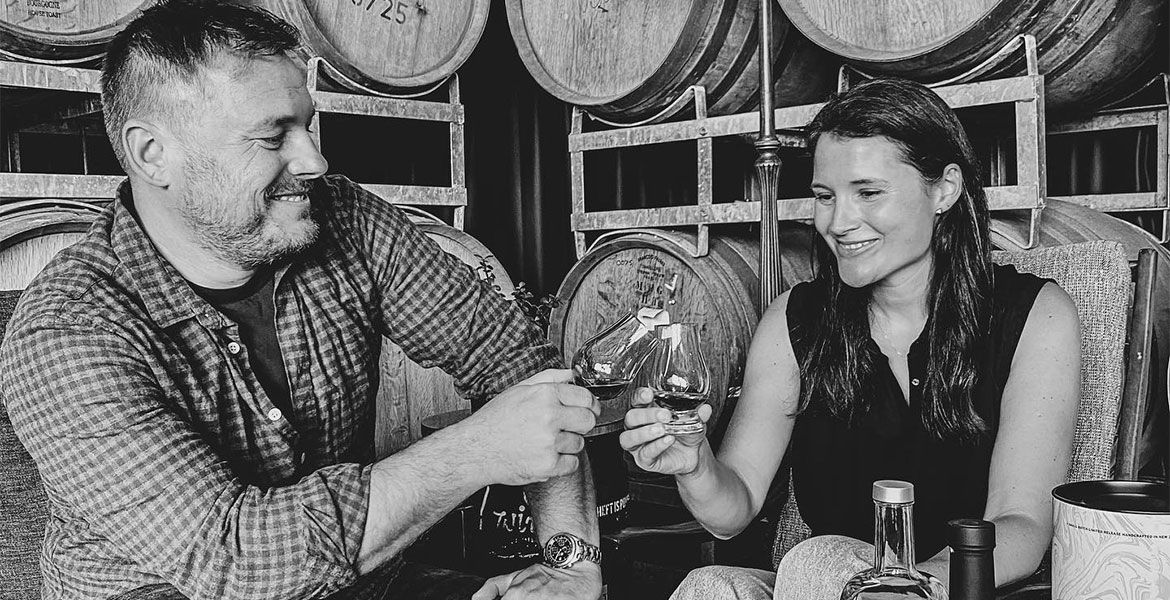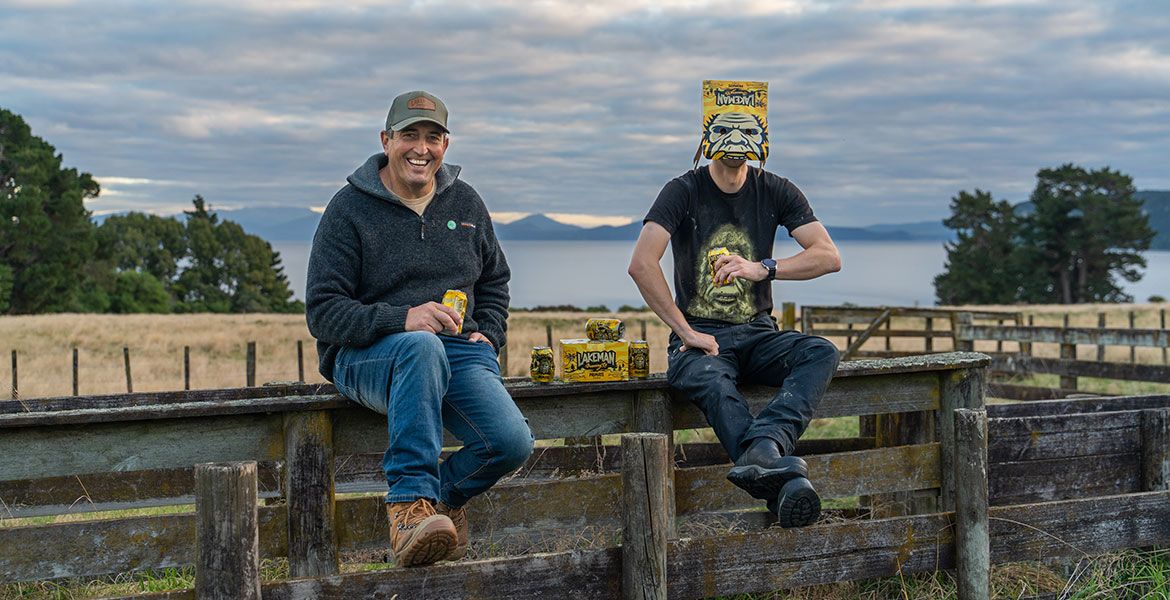Doug Donelan’s impact on the brewing scene extends well beyond his country of birth, Australia, and the one he now calls home, New Zealand.
He made his way in the brewing world working for Chuck Hahn, going on to be the first head brewer at Sydney’s Malt Shovel Brewery, before becoming the inaugural chief executive of New Zealand Hops. During his 12 years in the role, he helped transform New Zealand’s hop industry from being volume- and commodity-focused into one of the most exciting in the world.
As he stepped down from NZ Hops and started looking forward to retirement, one of the beer industry's true characters sat down with Jono Galuszka to offer his musings on his time in the industry.
Fermenting Everything

“I did my first homebrew in 1976. It was a bag-in-box Coopers wort kit that my brother Matt [who went on to launch St Peter's Brewery in Sydney – one of the city's earliest craft breweries] brought home and said, ‘Look at this, we can make beer out of this’.
"I was living in Liverpool in south-western Sydney with my mother in our family home. I had a fascination with fermentation. I would try and ferment just about everything. I fermented some pumpkins once. It was surprisingly good, actually. It didn’t look like it for a while, because there were all these festering, bubbling buckets of stuff in our shed my mum used to scratch her head over.
“My brother and I – he is two years old than I am – were always into beer. We used to go look for things like Tuborg, Carlsberg or any sort of imports. We ended up travelling in the United States in the 1980s. We visited Sierra Nevada when they were a little brewing company in Chico, went to Portland and over to the East Coast, saw Samuel Adams as it was starting up. But we also found a lot of imported beer in the US. Then we travelled Europe and did the same thing.
“We really wanted to get into brewing, but couldn’t find a way in. At the time in Sydney there was the Lord Nelson Brewery in the Rocks, Scharer's Brewery in Picton, and Matilda Bay had started up in Western Australia. Matilda Bay Pilsner is probably one of the best beers ever made in Australia – I still maintain that today.
“Matt and I both went and studied food science. Matt started with Hahn Brewing Company in 1991, while I was off doing volunteer work in Fiji. When I came back I didn’t really know what I wanted to do, but Matt said there was a job going at the brewery. I went down, got started, and that was the end of it really.

"The plan was that we would start our own brewery, but we just never had any ability to raise funds. There had already been one big flurry of independent breweries come and go broke, so a lot of people thought it wouldn’t work. I started with Lion [which purchased Hahn Brewing]. Chuck stayed with Lion and became head brewer for the group, but his passion was craft beer.
“Chuck got permission from the powers-that-be at Lion to get the Hahn Brewery back under his control, open the Malt Shovel Brewery and launch James Squire in 1998. I was working at Tooheys running a packaging hall when Chuck rang me and asked if I wanted to come back as head brewer at Malt Shovel. It didn’t take me long to think about it.
“It was a tough first couple of years, because we weren’t going to get a hand up from the company. People weren’t developing their own brands – they were buying them – but Chuck was convinced that you could actually start from scratch and develop your own brand.
"We had to prove the model would work. We lasted a couple of years before we could convince the company to distribute for us. We were trying to supply beer into Melbourne, which was completely controlled by Carlton & United at the time. Tooheys ended up buying a stack of pubs in Melbourne and two of us were charged with putting a brewpub in there.
"It was called the Melbourne Ale House. We ran it for about two years, and then it was converted to a James Squire Brewhouse. It changed everything. Once we started brewing beer in Melbourne we started selling through Dan Murphy’s. I really had a lot of fire in the belly and we kicked down a lot of doors to launch that brand."
HOPPING ACROSS THE DITCH

"It was in about 2005 I saw the New Zealand Hops job advertised, and I wanted to come live here. I had been judging at the New Zealand International Beer awards in Nelson, my wife is from here – Wellington had been my second home for a few years – and we really loved Nelson.
"I was coming out of a highly-paid position within Lion. A lot of people said, 'You’re fucking mad to take that job' and, to tell you the truth, [Malt Shovel] was a dream job – I loved it – but you have to make decisions at times in your life around where you want to be. My daughter had turned five, she was starting school, and I didn’t want her growing up in Sydney going to school where we were. Sydney is a great place to live when you’re single or a couple who don’t have kids – it’s my hometown and I had lived there all my life. We lived in Bondi and really lived the Sydney life. But as a parent you start thinking about where you want to live and what you want to do.
“I started at New Zealand Hops in 2006, and for the first few years it wasn’t the easiest job in the world. The market was really depressed, so pricing was really poor. We were operating on a price-taking model – we weren’t setting the price, we were taking the price offered – and had to compete with all the other big commodity producers internationally. You’re selling to the likes of Heineken who are just ruthless, so relationships weren’t great with our customer base. We couldn’t compete on commodity as we weren’t big enough."
At the time, NZ Hops' customer base was limited to big customers: Lion, DB, Heineken, Guinness and Molson Coors.
"We had two big varieties – Pacific Gem and NZ Hallertau Aroma, which became Wakatu – that were about 80 percent of the total volume we grew, and it was being sold to half a dozen companies. You don’t have control of your business in that situation; they have control of your business.
“It was not only about changing the mindset of the people growing the hops, but also trying to get into the market. At the time, we couldn’t sell a specialty hop into the United States. No one was really interested in New Zealand hops. Up until then in the US it was all Cascade, Columbus, Chinook. We had to try to get into the market there.
"How we did it was through the homebrew market.We got involved with Brewcraft in the USA, which was owned by a New Zealander. Homebrewers at that point were becoming commercial brewers, so stories started forming around New Zealand hop varieties.
“We didn’t really get any real traction in the US until 2011. By that point, a few other changes had happened in the market so there was a whole lot of new interest in New World varieties. We managed to just get in on that, increase distribution and start signing up some of the bigger craft brewers to contract agreements, like Sierra Nevada and New Belgium.

“Nelson Sauvin was not a popular variety at all. We took a few goes at launching it, but we just couldn't get any traction on it. The problem wasn’t the hop so much, more that people just weren’t ready for anything like that. The first company that took it in any real volume was Anheuser Busch. They took it and put it into some of the smaller brands and pseudo-craft brands they were doing. They used it for a couple years but it fell away for them, but by then it didn’t matter because we had volume in the ground. One thing led to another, and we just couldn’t keep up.
“At that point, Nelson Sauvin was an eight-tonne-a-year variety. It’s probably over 300 metric tonne now, and you could probably grow another 200 metric tonne and sell it.
“[Nelson Sauvin’s success] came when the market was really looking for anything new and different. That market hasn’t gone away. The new and different is what everyone is still chasing. Everyone is looking for what the next big thing is going to be.
“At the same time [Nelson Sauvin was taking off] we had varieties like Motueka. That variety was picked up by Kirin in Japan. They were using it in a third category beer there; third category beer is no malt or very low malt. What they are driven on are interesting, fruity hop characters and low bitterness. Motueka fit in there perfectly for Kirin. The problem is, those beers have very short life cycles. You’ve got a popular brand for three years, someone else brings out another popular brand and your one just disappears.
"When that one disappeared we had significant volume of Motueka in the ground and Kirin said, ‘We don’t think we’re going to be taking too much in the future’. But it didn’t matter, because we had developed markets for that in the United States and United Kingdom. We just shifted that volume into the craft market.
“I’m a lager guy. I love brewing them. The thing about Motueka in that style, I love the lime and mineral character it brings. It does smell like a mojito. I like where you can use it. It’s great late, it’s great really late, you can use it as a bittering hop, you can use it as a dry hop.
"It’s also got something that I’ve never, ever been able to put my finger on. It just makes the beer it’s in. I’ve been in a situation where you’ve had to take it away and put it back, and there is that big mark of difference when it is there and when it isn’t.
“Motueka is around about a 200 metric tonne [per year] variety at the moment. When I started at New Zealand Hops we grew about 1,600 kilograms. At one point it was completely removed. I know that because I was working at Malt Shovel and we had B Saaz, as it was called then, as one of the hops in James Squire Pilsner. It was a key hop. We contracted it and got it put back in.”
The Future Of NZ Hops. And Doug

"The most important part of the whole process [of going away from a commodity product] is to have a research programme and have new varieties coming through the programme.
"It used to be that when you developed hops you would grow them and get a fair idea about their agronomics and a lot of other information before you would brew with them. You have to make sure that agronomically they’re going to yield. But the important thing is to find out very early in the process if they’re any good to brew with. We weren’t doing that.
"Now, we are doing dry-hopping trials with seedling selections much earlier in the process to find out if we were going to continue on with them or not. The thing is, there are lots of great hops. But they need to be better than great. They need to have that big wow factor.
Read Jono's past feature on those growing and developing hops in New Zealand here.
“Hort 4337 – it will be the next big thing. Anybody who has used it has come away going, ‘Man, this is just incredible’. That’s going through the next process now.
"You still have to find out if it’s going to yield consistently year-on-year. There’s no use getting excited about a hop if it’s going to, from year-to-year, do 2,000 kilograms per hectare then 1,400. Riwaka is a hop which is incredibly popular – out of the box, there’s nothing anywhere like it – but, unfortunately, it is very low yielding. It is very difficult to grow. Of course, growers don’t want to grow things that are difficult to grow.

“For a long time New Zealand Hops were the industry in New Zealand. [The business is a cooperative, owned by the majority of hop farmers in New Zealand]. We aren’t anymore. You’ve got Freestyle Farms, Hop Revolution and more will come. I’m convinced there will be others.
"Everyone at some point is going to have to realise that, as a grouping, it has to be ‘New Zealand Inc’. The most important thing will be to have some form of cohesion between all those groups so they’re out taking on the world market and not taking on each other. I don’t think it’s going to be a very happy place initially but, eventually, good sense will prevail and there will be some sort of sharing of governance around the sorts of things industries need: relationships with government, research partners, universities, all that stuff.
“I turned 60 in August, and it gets to a point where you start thinking about what you’re going to do. From 60, you don’t really know how much longer you’re going to be around. The older you get, the more you think about that stuff.
“I’m certainly not lost to the industry. I’m still involved with Golden Bear Brewing. I’m off to the World Beer Cup in 2020. I know a huge amount of people in the industry. A lot are really good friends. I don’t want to lose that. I certainly intend to get back into brewing.
“I’m just going to see what it is like being retired. It is a bit weird, I have to tell ya. But I’m really enjoying not having to get up and go to work every day.”
You can check out our Craft Beer Heroes series here, read more of Jono's articles on the New Zealand beer scene here and other NZ beer stories on Crafty here.
Keep up with Jono elsewhere on the internet on Twitter, or his beer blog From Drinker to Brewer, which you can also follow on Facebook.



